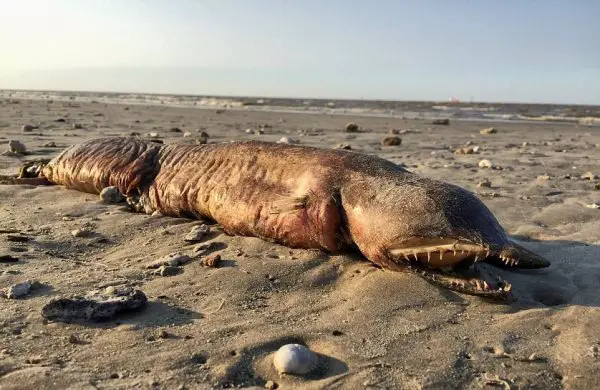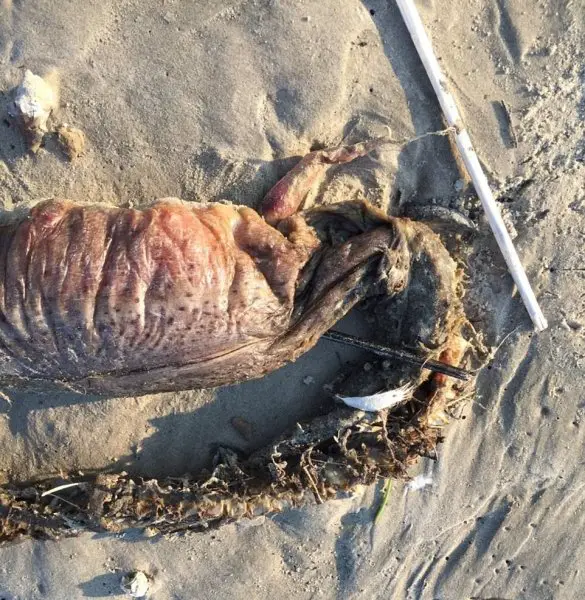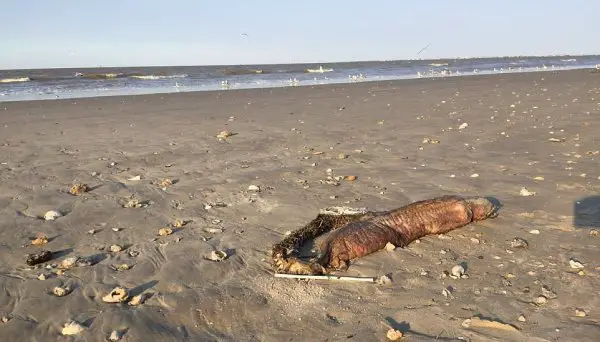This Mysterious, Eyeless Sea Creature Washed Ashore In Texas After Hurricane Harvey
Tags: News

By Amanda Froelich Truth Theory
Humans weren’t the only species affected by Hurricane Harvey, wildlife — including mysterious sea creatures — were displaced by the natural disaster, as well. This fact was affirmed when a mysterious, eyeless sea creature washed ashore on a city beach in Texas following the intense storm.
Preeti Desai of the National Audobon Society was one of the first people to discover the creature. “On first glance it looked like something from the deep sea to me,” said Desai. “My initial thought was it might be a sea lamprey but when I got close I realized there was no way that was what it was, particularly based on the mouth. We squished it around a bit, and even turned it over but couldn’t come up with any other ideas.”

Stumped by its species, she posted the images to Twitter to ask for help from biologists. “This is the kind of thing that’s perfect for Twitter – there are so many scientists and researchers on the platform and they’re very willing to jump in and figure out things like this,” she said.
The Daily Mail reports that the biologists who responded believe the “sea monster” is some type of eel. They had a hard time agreeing on what kind, however. “I mentally smacked my forehead, because once that was suggested I could absolutely see the eel shape,” said Desai. The general consensus is that the animal is a fangtooth snake-eel, also known as a tusky eel. Reportedly, it is native to the Gulf of Mexico. The tusky eel lives in waters about 30 to 90 meters deep, and spends most of its life hidden away. Now and again, however, it will venture to the shallows.

The eels have eyes, but they are incredibly small. It is possible this creature’s eyes decomposed by the time it was found by humans. Dr. Kenneth Tighe of the Smithsonian National Museum of Natural History is sure the creature is an eel. He believes it may also belong to another eel family, such as the garden or conger eels. Its long, sharp teeth exclude it from most eel families. Said Tighe, “It might be Bathyuroconger vicinus or Xenomystax congroides. All three of these species occur off Texas and have large fang-like teeth. Too bad you can’t clearly see the tip of the tail. That would differentiate between the ophichthid and the congrids.”
Via Daily Mail
Read more: 98-Year-Old Donates $2 Million In Stock To 395-Acre Wildlife Refuge
Images Credit: Preeti Desai
THIS ARTICLE IS OFFERED UNDER CREATIVE COMMONS LICENSE. IT’S OKAY TO REPUBLISH IT ANYWHERE AS LONG AS ATTRIBUTION BIO IS INCLUDED AND ALL LINKS REMAIN INTACT.
I am Luke Miller, content manager at Truth Theory and creator of Potential For Change. I like to blend psychology and spirituality to help you create more happiness in your life. Grab a copy of my free 33 Page Illustrated eBook- Psychology Meets Spirituality- Secrets To A Supercharged Life You Control Here.
Leave Comment: